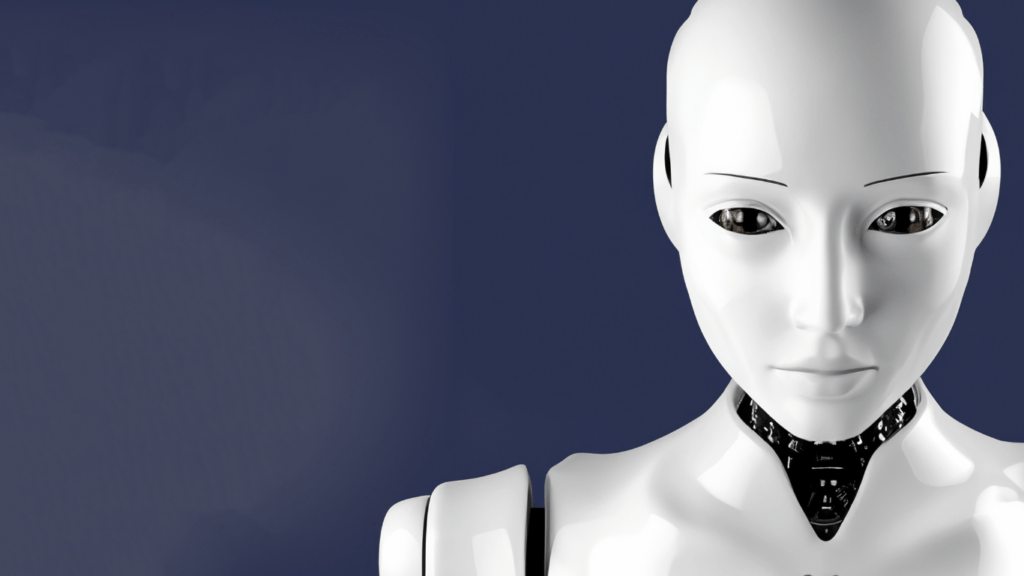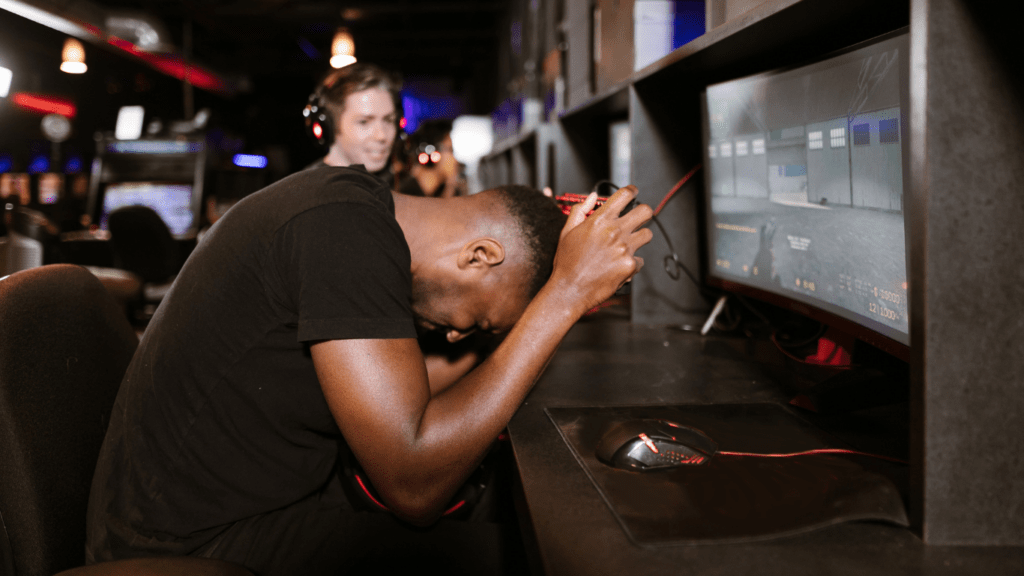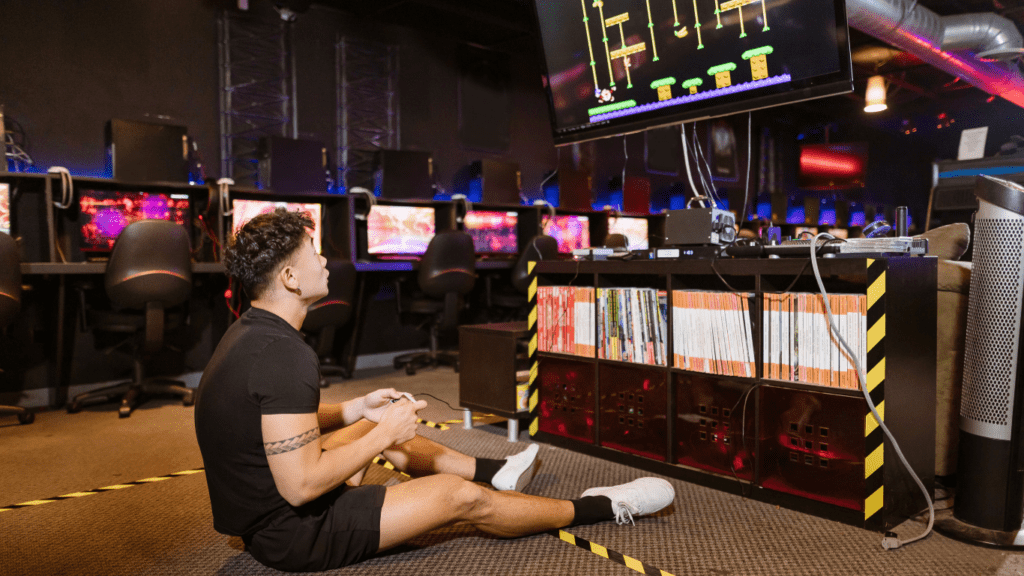Understanding Creative Blocks in Game Design
1. The Nature of Creative Blocks
Creative blocks in game design refer to the inability to generate new ideas or progress in the development process.
These blocks can be caused by various factors including stress, burnout, or perfectionism.
Recognizing a creative block’s nature helps in addressing it effectively.
2. Impact on Game Development
Creative blocks can significantly disrupt game development timelines and affect the quality of the final product.
When developers experience blocks, productivity decreases and project deadlines may be missed.
For example, entire game levels or mechanics could suffer from lack of innovation, negatively impacting user engagement.
Understanding these impacts underscores the importance of overcoming creative blocks efficiently.
Strategies Used by Developers to Overcome Creative Blocks
Collaborative Brainstorming
Collaborative brainstorming brings diverse perspectives into the game design process. I often engage with team members to generate ideas collectively.
This method leverages the collective creativity of the team to overcome individual creative blocks.
For example, during a brainstorming session, one team member might suggest a unique game mechanic, while another refines it with practical applications.
By discussing and refining each other’s ideas, game developers can break through mental barriers and discover innovative solutions.
Using Game Design Templates
Game design templates provide structured frameworks for game development. I utilize these templates to streamline the creative process and maintain focus.
Templates outline essential game components like mechanics, storylines, and characters, helping developers avoid getting stuck on initial concepts.
For instance, a template for a role-playing game might include predefined character archetypes and storyline branches, allowing developers to invest their creativity in enhancing these elements rather than starting from scratch.
Using templates ensures consistency and allows more time for creative enhancements.
Tools and Technologies That Aid Creativity
Software and Apps for Idea Generation
Specific tools and applications help game developers generate ideas.
Miro and Trello aid in visual brainstorming and project tracking.
Miro offers a collaborative whiteboard that allows for real-time idea sharing. Trello uses cards and boards to organize thoughts and tasks efficiently.
Another essential tool is MindMeister, which enables developers to create mind maps, helping to visually structure ideas and concepts.
Game design software like Unity and Unreal Engine provide robust environments for experimentation.
Unity’s Asset Store offers countless resources and examples.
Unreal Engine’s Blueprint Visual Scripting lets developers prototype without extensive coding knowledge. Both platforms enable quick, iterative testing of new game ideas.
The Role of AI in Creative Processes

Artificial Intelligence (AI) significantly impacts game development creativity.
AI-driven tools like Artbreeder create unique character designs by blending different art styles.
Promethean AI assists in world-building by generating assets and environments based on user input.
Machine learning algorithms analyze player feedback and behavior, offering insights to enhance game design.
Unity’s ML-Agents toolkit helps developers integrate AI in gameplay, improving enemy behaviors and adaptive learning.
AI accelerates the creative process by automating tedious tasks, allowing developers to focus on innovative aspects of game design.
Case Studies: Successful Overcoming of Creative Blocks
Indie Developers’ Innovations
Indie developers often showcase creativity through unique problem-solving.
The creators of “Celeste” faced a creative block during level design. They used a game jam, a competitive event creating games within a short span, to spark new ideas.
This constrained development period forced them to focus, leading to innovative levels that made “Celeste” critically acclaimed.
Another example, “Undertale,” highlights the use of player feedback to overcome creative blocks.
During development, the solo developer conducted early access trials and incorporated player suggestions.
This iterative process not only helped refine the game mechanics but also resulted in a more engaging, player-centered experience.
Major Studios’ Approach to Creativity
- Major studios, with larger budgets, can take different approaches.
- The developers of “The Legend of Zelda: Breath of the Wild” reached a block when redefining the series’ open-world elements.
- The team drew inspiration from a back-to-basics approach, revisiting the original “Legend of Zelda” game and blending those foundational concepts with modern technology.
- This fusion created a game that reinvented the franchise while capturing its essence.
- Another prime example is “God of War” (2018). The Santa Monica Studio reimagined this iconic series by immersing the team in Norse mythology.
This fresh thematic direction invigorated the team’s creativity, allowing them to explore new narrative and gameplay mechanics, which resulted in multiple Game of the Year awards.
- By examining these strategies from both indie and major studios, the methods to overcome creative blocks become evident through innovation, iteration, and a willingness to revisit foundational ideas.
Maintaining Creativity in Game Design
Regular Creative Workshops
Regular creative workshops help maintain creativity in game design. In these workshops, team members come together to brainstorm, share ideas, and critique concepts.
For example, game developers might use whiteboards for sketching out level designs or character concepts.
Workshops encourage diverse perspectives, which often result in unique solutions to design challenges.
By scheduling these sessions regularly, developers ensure a steady flow of fresh ideas and keep the creative energy high.
Encouraging a Culture of Innovation
Encouraging a culture of innovation fosters an environment where creativity thrives.
In such a culture, experimentation and risk-taking are valued. Developers might allocate time for side projects or hackathons, where exploring unconventional ideas is encouraged.
For instance, studios like Valve allow employees to work on passion projects, leading to unexpected breakthroughs in game mechanics and storytelling.
By prioritizing innovation, game designers remain motivated and engaged, constantly pushing the boundaries of what’s possible in game development.


 Charlie Bracegirdle seamlessly combines his passion for gaming with his role at Infinity Game Saga, where he is both a dedicated gamer and a prominent content creator. As an integral member of the team, Charlie brings a wealth of experience and a deep understanding of the gaming industry to his work. His articles and content cover a broad spectrum of gaming topics, from detailed reviews and insightful industry analyses to the latest trends and upcoming releases.
Charlie’s unique perspective, shaped by his own extensive gaming experiences, allows him to engage with readers in a meaningful way. His writing not only informs but also entertains, providing a blend of professional insight and personal enthusiasm. Whether he's exploring new game mechanics, dissecting game strategies, or sharing his thoughts on the future of gaming, Charlie's contributions make a significant impact on the Infinity Game Saga community. Through his work, he bridges the gap between gamers and the evolving landscape of the gaming world, enhancing the experience for all who follow his updates and analyses.
Charlie Bracegirdle seamlessly combines his passion for gaming with his role at Infinity Game Saga, where he is both a dedicated gamer and a prominent content creator. As an integral member of the team, Charlie brings a wealth of experience and a deep understanding of the gaming industry to his work. His articles and content cover a broad spectrum of gaming topics, from detailed reviews and insightful industry analyses to the latest trends and upcoming releases.
Charlie’s unique perspective, shaped by his own extensive gaming experiences, allows him to engage with readers in a meaningful way. His writing not only informs but also entertains, providing a blend of professional insight and personal enthusiasm. Whether he's exploring new game mechanics, dissecting game strategies, or sharing his thoughts on the future of gaming, Charlie's contributions make a significant impact on the Infinity Game Saga community. Through his work, he bridges the gap between gamers and the evolving landscape of the gaming world, enhancing the experience for all who follow his updates and analyses.
